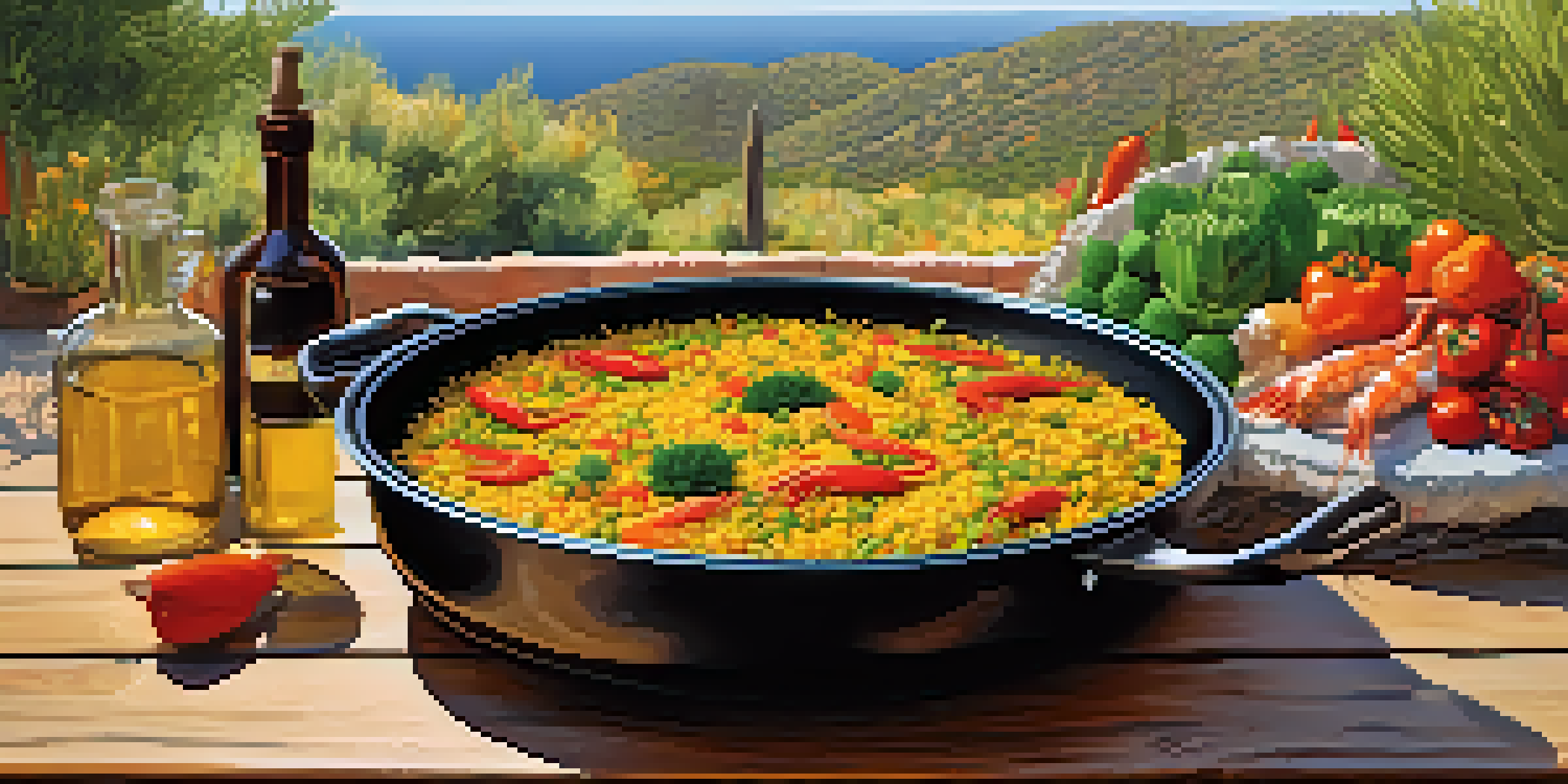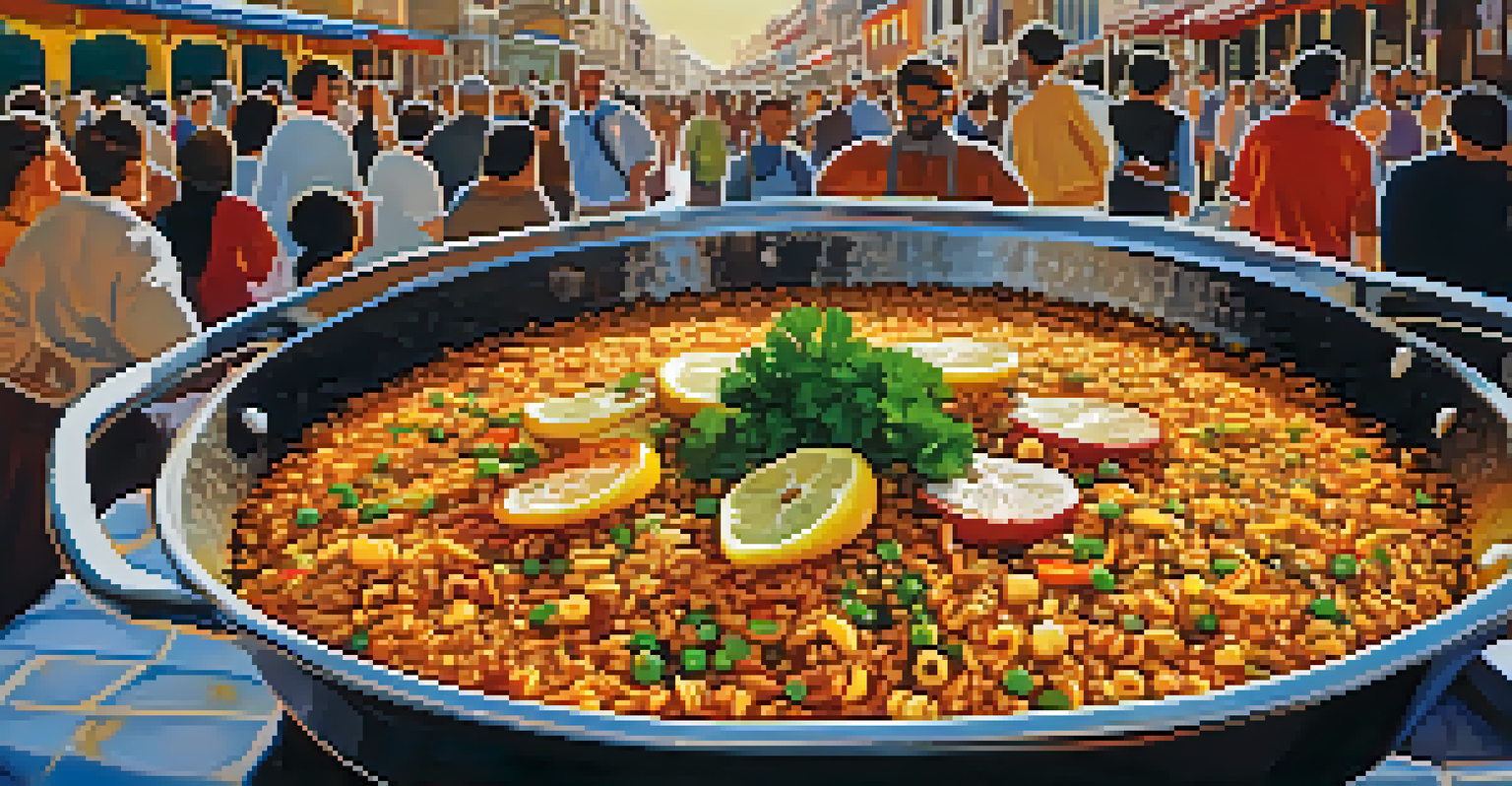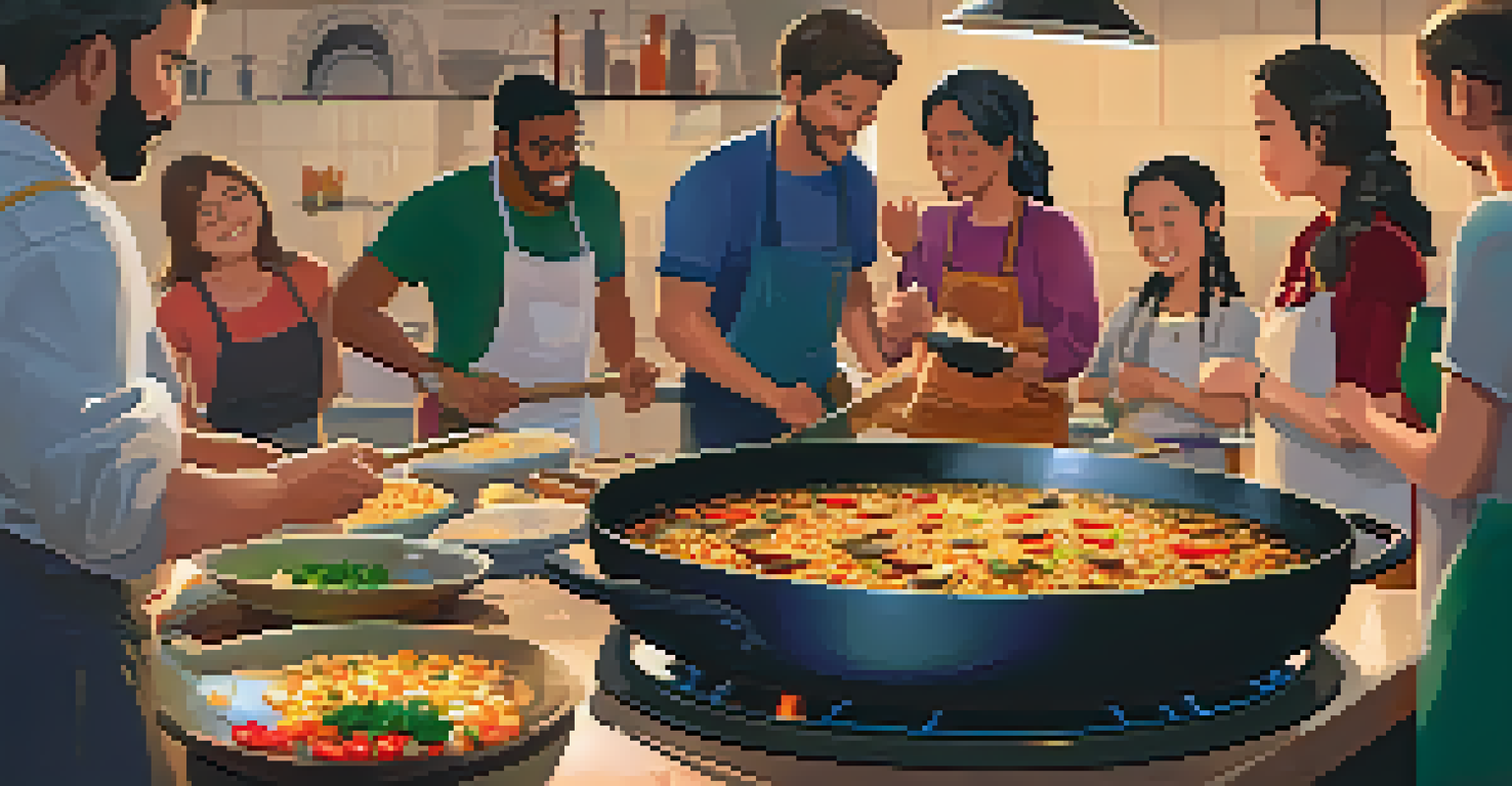Discover the Secrets of Paella in a Cooking Workshop

Unveiling the Rich History of Paella
Paella is more than just a dish; it's a celebration of Spanish culture. Originating from Valencia, this flavorful rice dish has roots that intertwine with the region's agricultural history. Traditionally, it was a meal for farmers and laborers, made with what they had on hand, which often included rabbit, snails, and local vegetables.
Cooking is like love. It should be entered into with abandon or not at all.
Over the years, paella has evolved into various regional variations, each with its own unique twist. From the seafood-rich versions found along the coast to the hearty meat-based options in landlocked regions, there's a paella for every palate. This diversity in ingredients reflects Spain's rich culinary landscape and its deep connection to the land.
Understanding the history of paella not only enhances your appreciation for the dish but also inspires creativity in your cooking. When you participate in a cooking workshop, you're not just learning to make a meal; you're stepping into a tradition that has been passed down through generations.
Essential Ingredients for Authentic Paella
To create a truly authentic paella, you'll need to gather some key ingredients. The star of the show is the rice, with Bomba or Calasparra varieties being the best choices because they absorb flavors beautifully without getting mushy. Fresh vegetables, saffron, and a good stock are also essential to achieving that rich, savory flavor that defines paella.

Seafood lovers will delight in the range of options available, from shrimp and mussels to squid and clams. For meat-based versions, chicken and rabbit are traditional, but feel free to experiment with other proteins. The secret is balancing flavors to create a harmonious dish that captures the essence of the Mediterranean.
Paella's Cultural Significance
Paella is a symbol of Spanish culture, often prepared for festive occasions that foster connection and conversation among family and friends.
A cooking workshop will often provide all the necessary ingredients, guiding you on how to select the freshest items. Knowing where to source your ingredients can make a world of difference, and a good instructor will share tips on how to find these treasures in your local markets.
The Art of Cooking Paella: Techniques to Master
Cooking paella is as much about technique as it is about ingredients. The first step is creating a delicious base, often starting with a sofrito—a mix of garlic, onions, and tomatoes sautéed until fragrant. This foundational layer infuses the dish with a depth of flavor that is essential for an authentic taste.
Food brings us together; it bonds us to one another, and it connects us to our roots.
Next comes the crucial step of toasting the rice, allowing it to absorb the flavors of the sofrito and stock. A common mistake is to stir the rice too much, which can lead to a mushy texture. Instead, let it simmer undisturbed, allowing a beautiful crust called 'socarrat' to form on the bottom of the pan, which is a prized part of any paella.
In a cooking workshop, you'll get hands-on experience mastering these techniques. With the guidance of an experienced chef, you'll learn when to stir, how to layer flavors, and the importance of patience in letting the rice cook perfectly.
Choosing the Right Equipment for Paella
The right equipment can make all the difference when cooking paella. Traditionally, a wide, shallow pan called a 'paellera' is used, which allows for even cooking and promotes the formation of the beloved socarrat. If you don't have one, a large skillet can work in a pinch, but you'll miss out on some of that authentic flavor.
It's also vital to choose the right heat source. While a stovetop works, cooking paella over an open flame or on a barbecue adds a smoky depth that enhances the dish. If you're cooking indoors, ensure that your pan is suitable for your stovetop type, whether gas or induction.
Essential Ingredients for Authenticity
Key ingredients like Bomba rice, fresh vegetables, and saffron are crucial for creating an authentic paella that captures Mediterranean flavors.
During a cooking workshop, you'll often have access to professional-grade equipment that can elevate your cooking experience. Learning how to use the right tools will not only improve your paella but also inspire confidence in your culinary skills.
Pairing Wine with Your Paella Creation
Pairing wine with paella can enhance the dining experience, bringing out the dish's flavors and aromas. A crisp, chilled white wine like Albariño or a light red such as Garnacha complements the seafood and meats beautifully. The acidity in these wines balances the richness of the dish, making each bite more enjoyable.
For those who prefer a non-alcoholic option, a refreshing sparkling water with a splash of lemon or a homemade sangria can also work wonders. These drinks cleanse the palate and provide a delightful contrast to the savory notes of paella.
In a cooking workshop, wine pairing might be included as part of the experience, allowing you to explore different combinations. Learning about these pairings can take your meal from ordinary to extraordinary, making it a memorable occasion.
Cultural Significance of Paella in Spain
Paella is not just a meal; it's a symbol of Spanish culture and family gatherings. Traditionally, it is prepared for festive occasions, bringing friends and family together around a table. The communal aspect of sharing a large pan of paella fosters connection and conversation, highlighting the importance of food in building relationships.
In many regions of Spain, paella is celebrated with local festivals that showcase the dish's variations and cooking methods. These events bring communities together, allowing people to share their culinary traditions and pride in their local ingredients.
Cooking Techniques to Master
Mastering techniques such as creating a sofrito and allowing the rice to form a socarrat are essential for achieving the perfect paella.
When you cook paella in a workshop, you're not just learning a recipe; you're participating in a cultural experience that connects you to the heart of Spain. This understanding adds a layer of meaning to every bite you take and every memory you create.
Tips for Making the Perfect Paella at Home
While cooking paella in a workshop is an enriching experience, it's essential to bring those skills home. Start by gathering the right ingredients and equipment to replicate the authentic taste. Don't hesitate to experiment with different proteins and vegetables based on your preferences and what's in season.
Another tip is to embrace the cooking process. Paella is a dish that requires patience and attention, so give yourself the time to enjoy it. Avoid rushing, and instead, savor the aromas and sights as your paella comes together.

Lastly, don't forget to share your creation with loved ones. The joy of paella is in its communal nature, so gather your friends or family around the table and celebrate your culinary achievement together!